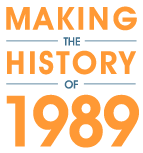Scholar Interviews
Questions
- Vladimir Tismaneanu: Is there a moment that stands out most about 1989?
- Vladimir Tismaneanu: What forces led to change in Eastern Europe?
- Padraic Kenney: Is there one moment that stands out for you personally?
- Padraic Kenney: One crucial moment of 1989?
- Maria Bucur: Is there one moment that stands out in your experience?
- Maria Bucur: What are the crucial moments of 1989?
- Maria Bucur: How did Romanians respond in the days that followed?
- Padraic Kenney: What led to the Round Table Talks?
- Gale Stokes: What do you think led to the unrest in East Germany?
- Gale Stokes: What moment stands out for you in the events of 1989?
- Gale Stokes: Why didn’t authoritarian states succeed?
- Gale Stokes: How did East Europeans react to the arrival of pluralism?
- Gale Stokes: What images of 1989 stick in your mind?
- Gale Stokes: Why did things go so badly in Yugoslavia?
Gale Stokes: What images of 1989 stick in your mind?
Transcription
There are some terrific images. You see the ones about the Berlin Wall, or Dubcek and Havel together, which was amazing. I liked what Garton Ash said about Dubcek, “Looked like he’d just stepped out of a black and white photo.” That was a good way of describing it. But, one of the great, great images is Ceausescu talking to that big crowd just before he had to flee, and he kind of looks up, and you can hear vague sounds in the background. He looks up, and kind of goes, like this, like he’s going to quiet the crowd. But they’re the most ineffectual little funny, funny movements. That, for me, that was one of the striking images.
